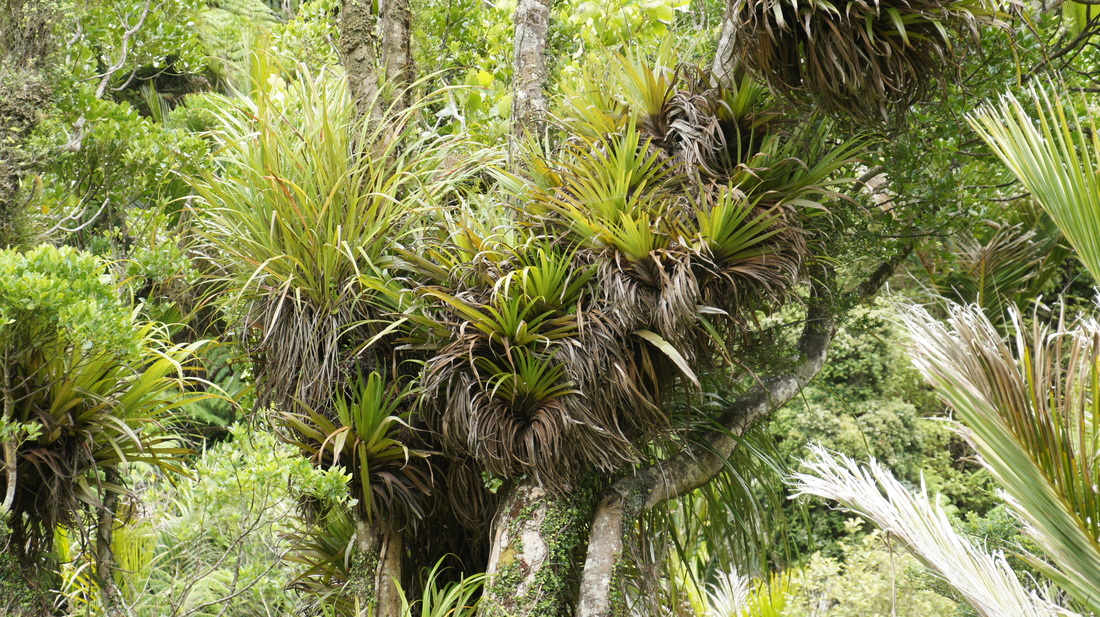However, there are other important factors that are conducive to the successful establishment of epiphytes:
- bark type: fissures and cracks can trap water and resources while flaking and peeling bark is unhelpful for secure attachment.
- architecture: large, widely spaced limbs provide good habitat while small, clumped branches block light and break under the weight of large loads.
- climate: if you grow in dry and harsh environments, you unfortunately don't have much chance of making the top ten! Trees that live in humid places (like valley floors) are inherently going to provide better habitat for canopy species.
New Zealand's "top 10" host trees
with their key epiphyte-friendly features
9. Totara - stringy bark and broad branches
8. Rewarewa - porous and deep forks
7. Mahoe - many habitats in the knarly branches of large trees
6. Kohekohe - widely space limbs
5. Rimu - large trees provide high light and large limbs
4. Tawa - high light environment and large limbs
3. Titoki - knarly wide limbs and deep forks trap resources
2. Pukatea - damp habitat and big forks
1. Tree ferns - possibly the perfect substrate for epiphytes
These trees were pretty casually assessed and with a fair amount of bias. I based my judgements on the suitability for epiphyte establishment which is why tree ferns won even though their small size means that they do not host large communities. I also used data on host trees in the North Island from mine and Kirsty Myron's and theses, as well as personal observations. I realise that species like kahikatea can have HUGE epiphyte loads when they are really large, but the young trees are poor hosts whereas species like pukatea and titoki seem to be good hosts from the start.
I am very open to suggested changes... what do you think? what have I missed from the South Island?




 RSS Feed
RSS Feed
